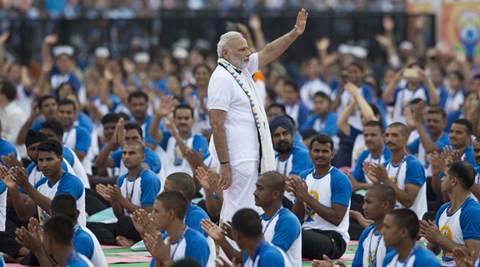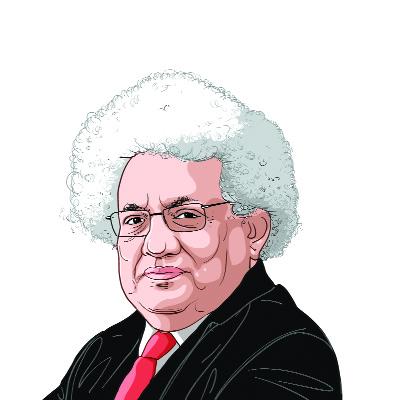Opinion Out of my mind: Modi’s challenge
Modi has now recognised the challenge Swamy poses. He has moved to contain him. But this is not the end of the story, just the end of the beginning.
 Indian Prime Minister Narendra Modi, center, greets thousands of yoga enthusiasts as they gather to celebrate World Yoga Day in Chandigarh, India, Tuesday, June 21, 2016. Millions of yoga enthusiasts are bending their bodies in complex postures across India as they take part in a mass yoga program to mark the second International Yoga Day. (AP Photo/Saurabh Das)
Indian Prime Minister Narendra Modi, center, greets thousands of yoga enthusiasts as they gather to celebrate World Yoga Day in Chandigarh, India, Tuesday, June 21, 2016. Millions of yoga enthusiasts are bending their bodies in complex postures across India as they take part in a mass yoga program to mark the second International Yoga Day. (AP Photo/Saurabh Das)  Prime Minister Narendra Modi on International Yoga Day. (Source: PTI/File)
Prime Minister Narendra Modi on International Yoga Day. (Source: PTI/File)
Political leadership is a hard job. You have to be chief executive plus PR chief as well as the HR person for your large team and your customers — the electorate. You never know when your job may go as David Cameron found out last week. Now there is a contest to replace him as quickly as possible as nothing is as damaging as a vacuum at the top. Labour Party is also facing a crisis of confidence in leadership and an election will soon be held.
In Indian politics, the choice of leader is opaque. The Congress has had two years since its most dramatic defeat and yet there is no change (even within the family) of leader. Complacency thy name is the Congress.
[related-post]
Watch Video: What’s making news
The BJP is not a dynastic party but its process of choosing its leader is hard to fathom. Certainly there is no open election with voting by members. The consequence of this is that the leader’s authority is precarious. When Narendra Modi was chosen to be the BJP’s parliamentary campaign leader, there was no formal election. When he won the election handsomely, his power was unlimited. The power derived from performance. Modi is unusual, in this way not just from other BJP leaders but from all leaders. As he has himself just said, he is an outsider unused to moving among the power elite of Delhi. He arrived at the top by the back door as it were. He has to deploy insiders such as Arun Jaitley to deal with the world of Delhi.
His power is derived from his ability to win elections. He has taken the BJP to a single-party majority. While he continues to win elections, he need brook no rival. This is why Delhi and Bihar coming so soon after the general election was a shock. Now Assam has re-established his winning streak. The next test will be Uttar Pradesh and Gujarat.
As they say in the House of Commons, your opponents are in front of you and your enemies are behind. After the victory in 2014, the BJP pensioned off senior members to give scope for Modi to run his own show without interference. What no one had factored in was that the BJP is not a pyramid like the Congress but rather a mountain range like the Himalayas.
This is how we need to understand the interventions of Dr Subramanian Swamy. He is one of the most senior BJP leaders still active. Unlike Advani, he has not been exiled into silence. He has a formidable mind and tenacious persistence in pursuing his goals. He was a thorn in the side of Indira Gandhi during the Emergency, a time when the Prime Minister was a pracharak. Swamy has challenged Jayalalithaa and Sonia Gandhi and pursued them through law courts. He derives his power, such as it is, from his skill at social media and his boundless energy.
There are clearly similarities between the Prime Minister and Dr Swamy. But there are also differences. The one thing Modi has over Swamy is his success at winning elections. He has also run governments at state and Union levels.
Modi has now recognised the challenge Swamy poses. He has moved to contain him. But this is not the end of the story, just the end of the beginning.





